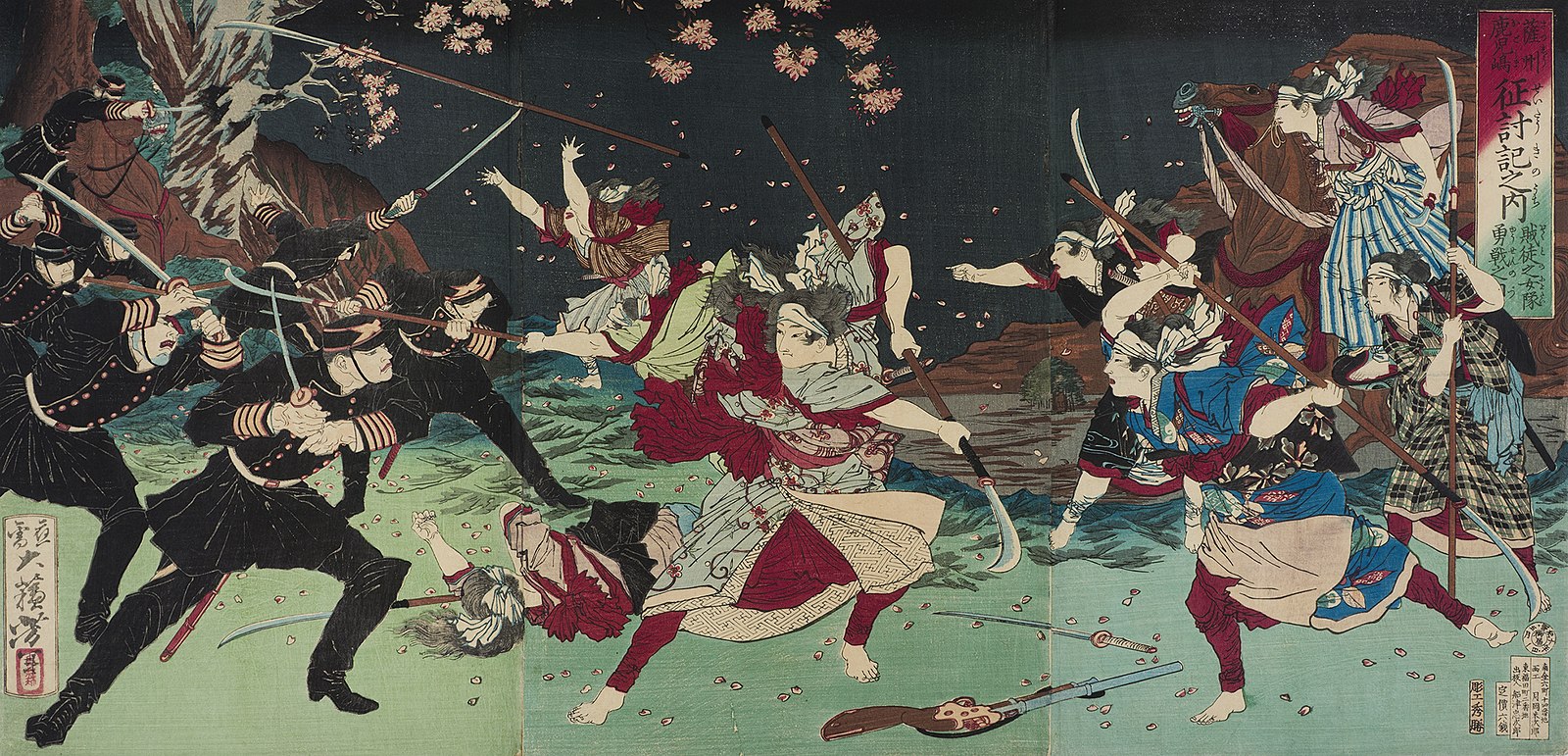Abolishment of the Edo Feudal Hierarchy:
The Successes and Consequences for Japan

"Chronicle of the Subjugation of Kagoshima in Satsuma." Yoshitoshi, Tsukioka, circa 1877
In 1871, Meiji leaders officially announced the abolishment of feudalism in Japan. The Edo feudal system stood as a paramount social class hierarchy to the identity of a Japanese citizen. This system determined each person’s occupation and became crucial in defining one’s socio-economic status. The ranking went by the following levels in order of highest to lowest power: the emperor, shogun, daimyo, samurai, peasants, artisans, and merchants. The differing beliefs between the bakufu government and the imperial regime about which administration should maintain the most power soon prompted a nationwide debate. Nevertheless, after multiple violent revolutions and insurgencies, Japan’s approach to conflict changed. Implementing legislation like the Meiji Constitution brought a pivotal type of change that further emphasized Japan’s new, conflict-free approach. Therefore, the abolition of the Edo feudal system had a significant influence on Japanese society and resulted in crucial diplomatic modifications to Japanese governance.